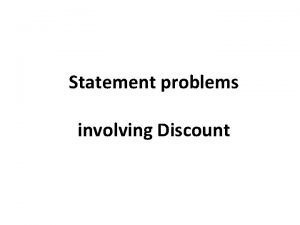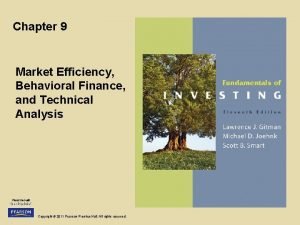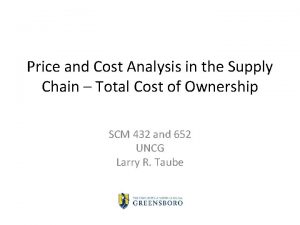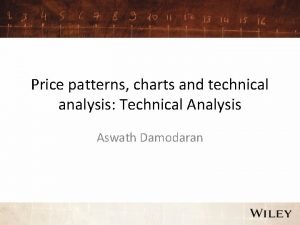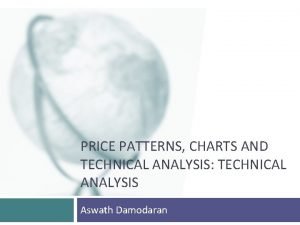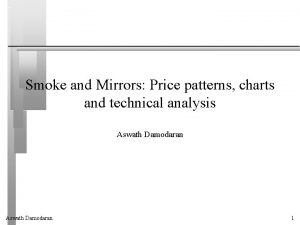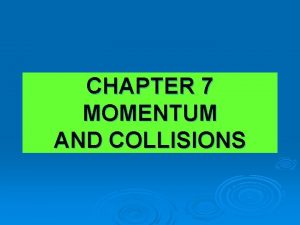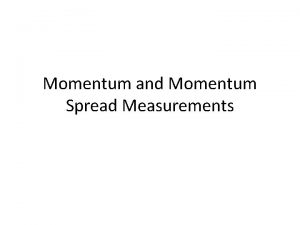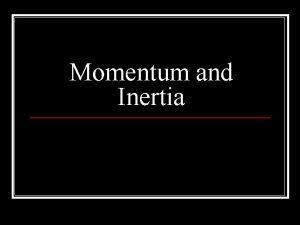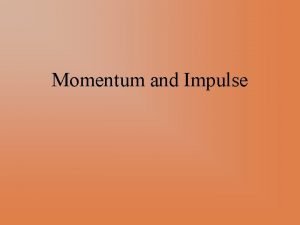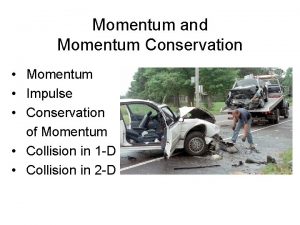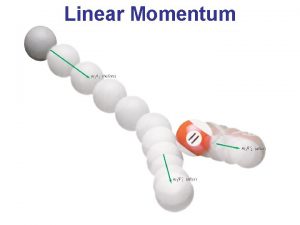PRICE PATTERNS CHARTS AND TECHNICAL ANALYSIS THE MOMENTUM














- Slides: 14

PRICE PATTERNS, CHARTS AND TECHNICAL ANALYSIS: THE MOMENTUM STUDIES Aswath Damodaran

The Random Walk Hypothesis 2

The Basis for Price Patterns 1. 2. Investors are not always rational in the way they set expectations. These irrationalities may lead to expectations being set too low for some assets at some times and too high for other assets at other times. Thus, the next piece of information is more likely to contain good news for the first asset and bad news for the second. Price changes themselves may provide information to markets. Thus, the fact that a stock has gone up strongly the last four days may be viewed as good news by investors, making it more likely that the price will go up today then down. 3

The Empirical Evidence on Price Patterns • • Investors have used price charts and price patterns as tools for predicting future price movements for as long as there have been financial markets. The first studies of market efficiency focused on computing the correlation in price changes over time, to see if in fact such predictions were feasible. • • • Positive correlation: Price momentum Negative correlation: Price reversal Evidence on price behavior can be classified into four classes – – Studies that looks at the really short term (minutes & Hours) Studies that focus on short-term (Daily & Weekly price movements) Studies that look at medium term (many months or yearly) Studies that examine long-term (five-year returns) 4

1. Serial Correlation in really short-term returns (minutes & hours) Market microstructure effect: The general consensus of studies in really short term returns (minutes, hours) is that there is very low serial correlation, with two structural effects: a. b. Market liquidity effect: If markets are not liquid, you will see positive serial correlation in index returns. Bid-ask spread effect: The bid-ask spread creates a bias in the opposite direction, if transactions prices are used to compute returns, since prices have a equal chance of ending up at the bid or the ask price. The bounce that this induces in prices will result in negative serial correlations in returns. Speed and Scale: To make money of these serial correlations, you have to trade fast, at low cost and in large quantities. Increasingly, computers are beating human beings at this game (high frequency trading, for instance). Imitated quickly: That said, even these computer-based trading strategies run out of steam quickly, since there always more powerful computers out there. 5

2. Serial correlation in the short term (days): Daily Return Predictability from 1926 -2018 Prior Period Returns Worst 2 3 4 5 6 7 8 9 Best Value Weighted 0. 0162% 0. 0332% 0. 0388% 0. 0391% 0. 0387% 0. 0422% 0. 0439% 0. 0517% 0. 0521% 0. 0646% Equally Weighted 0. 1308% 0. 0842% 0. 0760% 0. 0752% 0. 0729% 0. 0717% 0. 0718% 0. 0760% 0. 0825% 0. 0947% 6

3. Serial correlation in the medium term: Many months or a year Positive correlation: When time is defined as many months or a year, rather than a single month, there seems to be a tendency towards positive serial correlation. Momentum effect: Jegadeesh and Titman present evidence of what they call “price momentum” in stock prices over time periods of several months – stocks that have gone up in the last six months tend to continue to go up whereas stocks that have gone down in the last six months tend to continue to go down. Evidence: Between 1945 and 2010, if you classified stocks into deciles based upon price performance over the previous year, the annual return you would have generated by buying the stocks in the top decile and held for the next year was 16. 5% higher than the return you would have earned on the stocks in the bottom decile. 7

Annual returns from momentum classes 8

More “evidence” on momentum 1. 2. 3. 4. Volume effect: Momentum accompanied by higher trading volume is stronger and more sustained than momentum with low trading volume. Size effect: While earlier studies suggest that momentum is stronger at small market cap companies, a more recent study that looks at US stocks from 1926 to 2009 finds the relationship to be a weak one, though it does confirm that there are sub periods where momentum and firm size are correlated. Upside vs Downside: The conclusions seem to vary, depending on the time period examined, with upside momentum dominating over very long time periods (1926 -2009) and downside momentum winning out over some sub-periods (1980 -1996). Growth effect: Price momentum is more sustained and stronger for higher growth companies with higher price to book ratios than for more mature companies with lower price to book ratios. 9

4. Long Term Serial Correlation: Over many years 10

The tipping point… Momentum works, until it does not. . 11

Extreme Momentum: Bubbles. . • • • Looking at the evidence on price patterns, there is evidence of both price momentum (in the medium term) and price reversal (in the short and really long term). Read together, you have the basis for price bubbles: the momentum creates the bubble and the crash represents the reversal. Through the centuries, markets have boomed and busted, and in the aftermath of every bust, irrational investors have been blamed for the crash. 12

Blooper versus Bubble Blooper Bubble Rational markets can make mistakes. Assessments of value are based upon expectations, which are formed with the information that is available at the time of the assessments. You will be wrong a lot of the time and very wrong some of the time. It is therefore entirely possible and very likely, even in an efficient market, to see significant pricing errors. A bubble is a willful error, suggestive of irrational behavior at some level. This irrational behavior manifests itself as an unwillingness or incapacity on the part of investors in the market to face up to reality. Separating bloopers from bubbles is difficult. There is a tendency on the part of some (the anti-market efficiency crowd) to view all big price adjustments as evidence of bubbles, just as there is a tendency on the part of the others (the true believers in market efficiency) to view all big price adjustments as evidence of bloopers. 13

The Bottom Line Are stock prices correlated over time? Yes, but in what direction and how much depends on your time horizon and the type of stock that you are looking at. With shorter time horizons (days to months), momentum strategies, where you buy past period winners and sell past period losers seems to win out. As the time horizon lengthens to years, reversal strategies seem to be better, where you sell past period winners and buy past losers. With both these strategies, the risk is that you are off on your timing. All these strategies work better of less liquid, higher growth and smaller cap stocks than on larger cap, more liquid stocks. 14
 Kilala bilang price support at minimum price policy
Kilala bilang price support at minimum price policy Conceptual physics chapter 6 momentum
Conceptual physics chapter 6 momentum Price discovery and price determination
Price discovery and price determination Closed patterns and max-patterns
Closed patterns and max-patterns Marked price-selling price=
Marked price-selling price= Characteristics of installment payment system
Characteristics of installment payment system Reactive sourcing
Reactive sourcing Weather surface analysis
Weather surface analysis Contemporary dating patterns are formal patterns
Contemporary dating patterns are formal patterns System analysis and design proposal
System analysis and design proposal Behavioral finance and technical analysis
Behavioral finance and technical analysis Supply chain management cost analysis
Supply chain management cost analysis Hát kết hợp bộ gõ cơ thể
Hát kết hợp bộ gõ cơ thể Ng-html
Ng-html Bổ thể
Bổ thể




